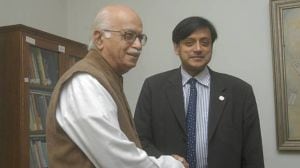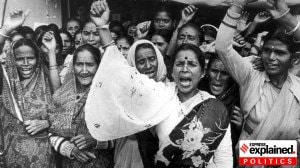Rajaji As He Was
A new biography places his inscrutability in the context of his times
A new biography places his inscrutability in the context of his times
The legendary American journalist Louis Fischer once described Gandhi as the prophet of Indian independence,Nehru its poet and crusader,and Chakravarti Rajagopalachari (affectionately called Rajajai) as its statesman. But so fickle is the goddess of historical reputation that while the first two names get instant recognition,the inhabitants of Delhi may be forgiven if they do not associate Rajaji Marg with Rajagopalachari.
An astounding fate this,for a man once described by Gandhi as the keeper of his conscience,the most powerful Congress leader in south India,twice head of the Madras government,the first Indian governor of Bengal (where his grandson,Gopal Gandhi,holds the same office),the second governor-general of India,and the guiding spirit of the Swatantra Party the only party to oppose Nehru ideologically.
The reasons for this neglect are complex. Rajajis often quixotic political forays did his considerable reputation no good. For instance,he is probably remembered for championing Pakistan before it became inevitable,leading to his fall from grace with Gandhi,and immediate sidelining in Congress politics. In Tamil Nadu,he is something of an embarrassmentas a Brahmin,he was made politically ineffective by his one-time protégé and life-long friend,Periyar. In other parts of south India,he is remembered as a vocal and influential opponent of linguistic provinces. His open religiosity and bluntness also proved to be a barrier for many.
So far only Anthony Copley and Rajmohan Gandhi have done justice to his considerable achievements. Hyderabad Universitys Vasanthi Srinivasan has now made a major contribution to our understanding. She places Rajaji in the context of the political world of his day,and attempts to derive a coherent political ideology from the practical,day-to-day working out of his ideas and ideals. One of the many virtues of this book is the manner in which Srinivasan has mined Rajajis writings in Swarajaya to illustrate his politics. They are not only a window into the mind of Rajaji,they are breathtaking in the breadth of vision,thoughtfulness,moderation,political acumen and learning they reveal,and written with an enviable clarity and precision of language.
Srinivasans reading of Rajaji leads her to describe his political ideology a little awkwardly as theocentric liberalism. She bases herself on Rajajis long lists of works related to Hinduism translations of the Ramayana,Mahabharat,the Upanishads,as well as stories based on themes from Hindu scriptures or derived from them.
Rajaji had an ethical perspective rooted in Hinduism his worldview was based upon it. Onto this he grafted the principles of classic liberalism,especially representative democracy. But the problem was that these more than once overtook liberalism,tying him up in knots,and leaving him open to charges of opportunism and Machiavellism. For instance,he once encouraged a bill on temple entry to be moved in the Madras assembly. A week later,he asked that it be withdrawnbecause of a flash of mind. The resultant furore and accusations were very different from what someone like Gandhi achieved with his inner voice.
Importantly,Srinivasan notes that Rajaji was not a conservative in the classic meaning of the word,politically. It is only in the sphere of womens rights that we see his traditionalist,condescending,and unrelenting attitude that women were inferior to men.
If Rajaji was politically not conservative or backward-looking,why was it possible to paint him as one? It was easy to caricature him as such,given his changes of views,and the fact that the Swaraj Party was made up of ex-maharajahs and capitalists. It was easy to satirise them as the haves-wanting-more. Rajaji,it seems,in spite of his personal rectitude and integrity,was his own worst enemy.



- 01
- 02
- 03
- 04
- 05




























